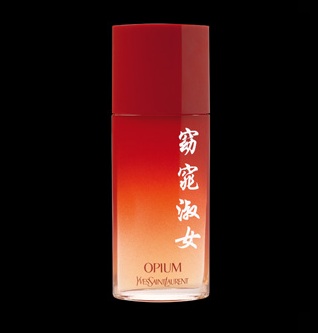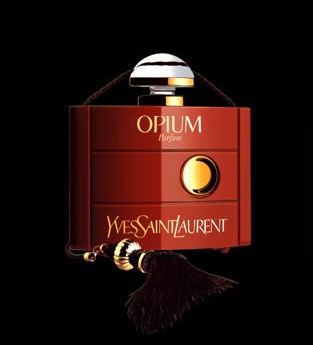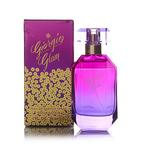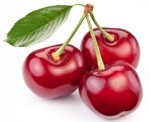Yves Saint Laurent Opium Poésie de Chine (2008): Salty Iris & Caramelized Eel {Perfume Review}

The Synergy That Is Opium
Since 1977, Opium by Yves Saint Laurent has managed to achieve iconic status both from the viewpoint of the perfume it is and the image it projects. For people who might feel skeptical about the importance accorded the outer shell of a fragrance, Opium is an eloquent example of that higher level of self-realization for a fragrance so well given meaning and definition by its container that no doubt remains as to the adequation of the bottle to the jus and the desirability and marking personality of the scent; this is a quality that both mainstream marketing professionals and perfumers aim at and which they refer to as "synergy". Some perfumers even explain that ideas finally gelled when they saw the flacon for the scent they were developing......

One could use the metaphor of the two sides of a coin to designate such an ideal case of aesthetic correspondence between these two distinct aspects of what constitutes a fragrance. According to this binary view, the two sides are separate yet make up one full object. Some people will prefer to define "perfume" as being the jus, others will consider a plurality of elements surrounding the scent proper and consider more largely it to be an aesthetic object that is to be olfactorily, visually, and tactilely approached. The latter position is somewhat more complex and puts more constraints a priori on the success of a given composition since more risks are taken. The jus could be excellent but then the bottle distract from it or the vessel for the perfume could be awe-inspiring but make the jus feel by comparison like a letdown. Perfume lovers who take a dim view of synergy are suspecting that the design of the bottle may influence an enhanced perception of the jus, which would otherwise fare poorly were it to be poured in a basic container with no distractive details to take the critical mind off the imperfections of the scent itself. There might be however an inherent contradiction to this position, which is that it at once recognizes the influence of the bottle on the scent affect, yet erases this affect when it comes to a basic container deemed to be "invisible" or “neutral”. For all we know, a very unadorned lab bottle might have an influence in the perception of the scent for one who recognizes the possible distorting effects of "external aesthetics". One can wonder for example if Frederic Malle Carnal Flower put in a frillier bottle might feel less intellectual and more readily sensual. And then a perfume is affected by the personality of the individual who wears it or the circumstances in which it is experienced, but this we leave aside for now. The synergists recognize the influence of immediate surrounding elements and attempt to harness their power, hoping to create unbroken fluid lines of aesthetic communication, or perhaps even better in reference to Baudelaire, a system of correspondences between the different senses leading to the dramatic stress on one, smell.
With Opium, it is hard to miss the seamless synergy existing between the Japanese inro-inspired flacon designed by Pierre Dinand and the exotic spicy floral oriental concoction it contains originally begun by Raymond Chaillan and completed by Jean-Louis Sieuzac. Opium is, in its iconic status and boldness of color and form, like the can of Tomato Campbell Soup of the perfume world although it was not even painted by Andy Warhol who was more interested in the abstract and diamond-like Chanel No. 5.
So one can appreciate the fact that Yves Saint Laurent indulge a priori in a perilous exercise, for a limited time, when redesigning both the perfume composition and the bottle for the summer each year for the past few years. Chanel No. 5 does not undergo as many metamorphoses and only more recently. The tension that exists here of course is between the respect for the iconicity of Opium and the need to breathe new life in a composition that could end up feeling obsolete in a market that is in constant renewal, sometimes truly, most of the times, superficially.
The miraculous character of this synergy is such that even as Yves Saint Laurent put out new summer editions in different containers and even while inhaling the new Opium Eau d'Orient Poésie de Chine for women for summer 2008, the visual referent that floats about in the imagination is the original red lacquered inro box. It has become the perfect expression of the Far Eastern spices one smells in it despite the fact that the olfactory references of Opium, the jus, are Chinese rather than Japanese, while inros are Japanese, and reminds one that inros were used to carry precious medicines acting as miniature traveling curative cabinets, among other things, for the Japanese who traditionally wore garments without pockets and therefore needed this accessory although the belt or sleeves could come in handy as well.
Opium Poésie de Chine for Women
The summer 2008 version respects as usual the structure of Opium and incorporates this time a floral note of magnolia, which originates from China, a pushed-up note of mandarin, also a Chinese delicacy originally hence its name (see Serge Lutens Mandarine Mandarin), as well as a good dose of a beautiful white vanilla rendering the perfume creamier and more full-bodied than is habitual for the summer Opium versions. A significant amount of iris makes the scent feel further more complex and intriguing. It seems that this year, the quest for a more sparkling, transparent texture has given way to a work on sophisticated, light creaminess.
The cultural inspiration for the scent comes from a verse from the Book of Odes, the most ancient literary work in China (ca.1000 B.C. E.), decorating the bottle. 窈窕 yao tiao means "poised and charming, engaging, enticing", and also archaic: "deep and hidden". Next 淑女 shu nü means "beautiful girl, refined girl". "Yaotiao shunü" is also the standard translation for "Pygmalion" in Chinese (cf. Shaw's "My Fair Lady"). There is also a set phrase: "Yaotiao shunü, junzi haoqiu" -- "The gentleman chasing after the fair lady". But as it occurs in the Book of Odes, it seems to mean either a woman in the imperial harem or a beautiful lady confined in a boudoir, feeling lonely. These are based on the archaic meaning of yaotiao as "deep and hidden".
Poésie de Chine, we find, feels more mysterious than the original opium.
At first it smells very much like Opium Eau de Toilette with its faint coca-cola nuance but then fades into a balsamic and ambery impression where one discerns significant notes of ambergris, iris, vanilla, and a pungent labdanum, the latter very well defined being both herbaly and animalistic. The tarry character of the original, inspired by Tabu, seems to have disappeared under a blanket of milky, creamy magnolia.
Then an orangey-floral impression develops, not like orange blossom but rather like a mix of dessert-y, taffetas-like magnolia, and mandarin. It is delicious. The creamy impression is reinforced by a chalky-powdery-creamy iris. The contrast with the classic Opium spicy accord of both cool and warm spices evoking on the one hand the freshness of a black oriental lacquer box upon first tactile contact and on the other hand the brasiero effect of smoldering spices makes the perfume feel even more complex.
The floral balsamic and spicy accord is intriguing seeming to pull in different directions like strangers going their separate ways but ultimately feeling harmonious. The ambergris is very much present with its marine nuance and one would say in this case even piscean facet. Poésie de Chine seems to playfully allude to a discreet gourmand accord of salty little fish presented in a Chinese ceramic bowl.
As the scent gains volume, the famous carnation note of Opium makes a remarked entrance and adds its touch of powder and clove enhancing the medicine-cabinet aspect of the perfume. The salty facets of the fragrance add relief to the whole composition, just like in cuisine.
Poésie de Chine is a beautiful both muted or soft-spoken and rich rendition of Opium. The softness of the magnolia petals seems to caress your cheek while imparting the ideal weight of their extraordinary texture. The scents of salty iris – an iris that suggests also white rice at times - and caramelized eel add beguiling, original touches to the perfume. It feels like crossing a Chinese city, from summer palace to a market full of life.
The Eau de Toilette is in principle not distributed in the US market but can be currently found at discounter Scentiments.com for $44.99
Officially within the usual structure of Opium, three main notes have been developed: mandarin, magnolia, and vanilla.
See also the great report by Pauline on the Opium Express Exhibition









